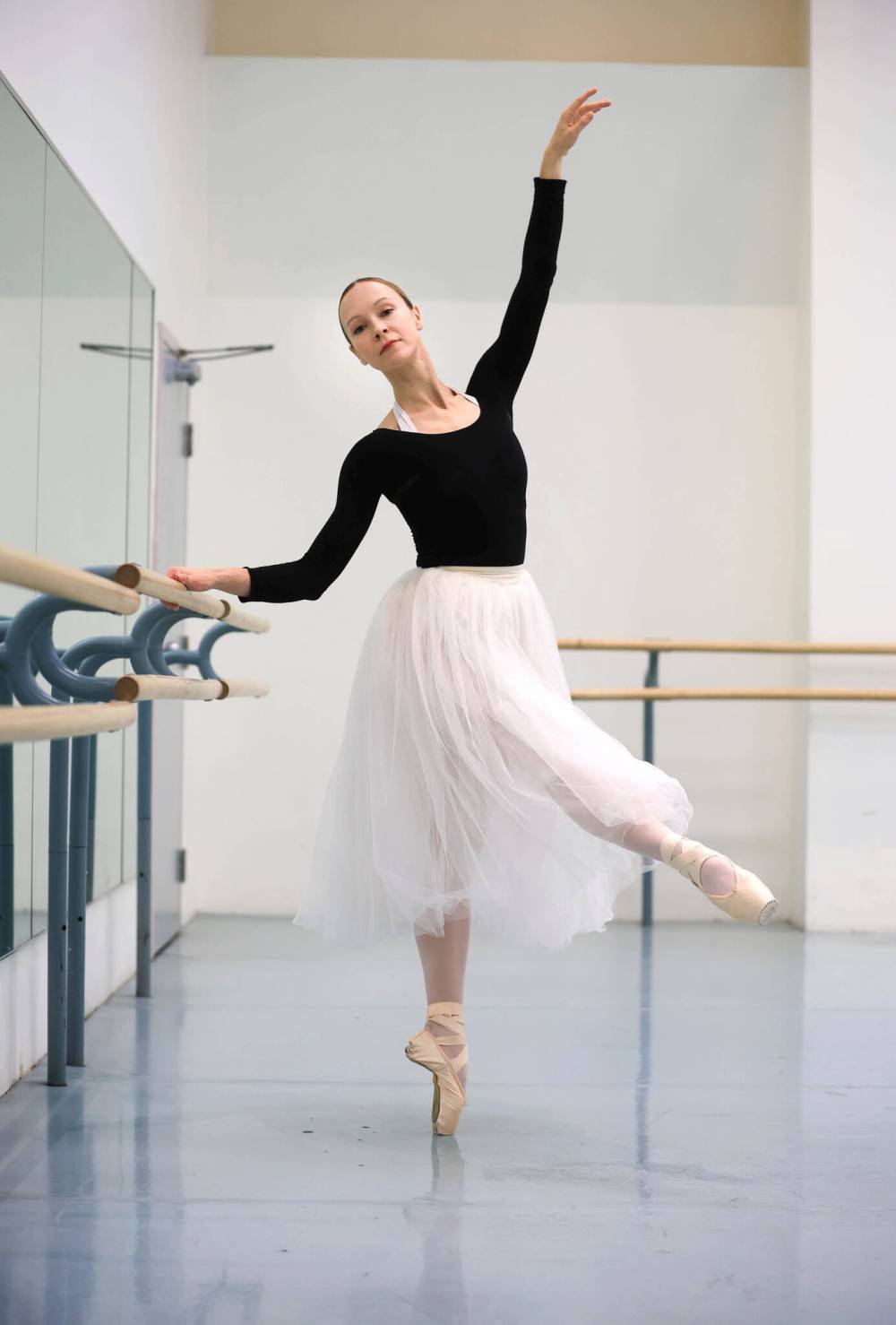
Royal Winnipeg Ballet principal dancer Elizabeth Lamont has dreamed of performing the iconic role of Giselle from the eponymous romantic ballet for her whole career. Read this article for free: Already have an account? To continue reading, please subscribe: * Royal Winnipeg Ballet principal dancer Elizabeth Lamont has dreamed of performing the iconic role of Giselle from the eponymous romantic ballet for her whole career. Read unlimited articles for free today: Already have an account? Royal Winnipeg Ballet principal dancer Elizabeth Lamont has dreamed of performing the iconic role of Giselle from the eponymous romantic ballet for her whole career.
Royal Winnipeg Ballet Centennial Concert Hall Thursday to Saturday, 7:30 p.m.; Sunday, 2 p.
m. Tickets $39-$129 at “This role, I always tell people, feels like the longest wait in the wings for me,” says Lamont, who has been a member of the company since 2010. “I’ve been pestering André (Lewis, RWB artistic director) for probably years, asking, ‘When are we going to do ?’” Her time has finally come.
This week, the RWB will open its 85th mainstage season with and Lamont, 34, will step into this rite-of-passage role for the first time, joining a list of former company dancers that includes Vanessa Leonard (née Lawson) and Evelyn Hart. “I was very happy that they trusted me with this role,” the Waterloo, Ont.-born dancer says of the moment she learned she was cast in the title role, alternating with fellow principal dancer Alanna McAdie.
“It’s always really important to feel seen as an artist and to know that they see the strengths that I have, I can bring to Giselle, so that was really special for me.” Choreographed by Peter Wright (after Jules Perrot, Jean Coralli and Marius Petipa), tells the tragic story of a beautiful peasant girl who goes mad and dies from heartbreak after Duke Albrecht, the man she loves, betrays her deeply. Her spirit is summoned from the grave by the Wilis — the ghosts of jilted young women who avenge themselves by making men dance themselves to death.
Lamont, who was promoted to principal dancer in 2022, knows that being in the top rank of the company affords her more opportunities to be cast in plum parts, but she also knows that doesn’t necessarily mean every principal dancer will get to perform Giselle. The role is a famously difficult one that requires more than just technical precision; it also requires keen artistic expression. Ruth Bonneville / Free Press Elizabeth Lamont in the RWB studio; the principal dancer is performing Giselle for the first time.
“You truly have to go mad on stage,” Lamont says. “And then, in the second act, you have to be as light as a ghost. That’s a tall order.
” ’s famous mad scene was the most challenging for Lamont — who worked on it in studio with Greta Hodgkinson, a former National Ballet of Canada principal dancer and dance mentor who has also performed in the role — because it required her to subvert her usual acting impulses. “The first thing I want to do is I want to look like I’m upset, because he’s betrayed me — and yet, you can’t actually look upset because it’s weirder to look fine,” she says. “So there’s very interesting acting moments.
” Lamont’s preparation for a role doesn’t just happen in the studio. She’s a researcher, and Giselle was a rabbit hole into which she was keen to fall. “My dance partners always make fun of me, because when I find out that I’m gonna do a role, I go in deep,” she says with a laugh.
“I really want to know as much as I can so that I can bring that onstage. And with Giselle, there’s so much to study.” Widely considered a masterwork, , which made its première in Paris in 1841, was among the first full-length ballets to be performed en pointe.
“Which obviously changes the game a lot,” Lamont says. “You can express yourself in a different way — and it’s interesting that they chose that as a way that we can look otherworldly as a ghost, as a spirit. “And it’s always very interesting to me, too, that in the first act, dance is seen as something that she wants to do so much, she loves it.
And then in the second act, it’s seen as a punishment.” While Giselle is considered both a rite of passage and a career highlight for ballerinas, there’s lots for the men to do in this ballet, too. Royal Winnipeg Ballet soloist Michel Lavoie, who is rising through the ranks of the company at a quick clip with back-to-back promotions from corps de ballet to second soloist in 2022 and then to soloist in 2023, has gone from never performing in a production of Giselle to dancing in the lead role of Duke Albrecht, alternating with fellow soloist Peter Lancksweerdt.
While Giselle is considered both a rite of passage and a career highlight for ballerinas, there’s lots for the men to do in this ballet, too. Royal Winnipeg Ballet soloist Michel Lavoie, who is rising through the ranks of the company at a quick clip with back-to-back promotions from corps de ballet to second soloist in 2022 and then to soloist in 2023, has gone from never performing in a production of Giselle to dancing in the lead role of Duke Albrecht, alternating with fellow soloist Peter Lancksweerdt. “I’ve seen it on the company, but this is my first time doing it myself, so I’m excited for that, because it’s such an iconic ballet,” says the 24-year-old born-and-raised Winnipegger.
As a soloist, Lavoie is no stranger to male leading roles, but there’s something particularly exciting about Albrecht. “When you think of Giselle, you think of all the iconic steps and choreography and story, so that inherently makes it something really attractive for a dancer, because there’s a lot to play with,” he says. “But I think what differentiates it from other ballets is the fact that the lead male role is a little bit different than your typical classical Prince Charming that you would find in Sleeping Beauty or Nutcracker.
Albrecht is a flawed character, and I think that’s really cool to see in a ballet. He makes mistakes, and he suffers the consequences for those mistakes. “It gives the artist in me something more to do with it than just dance.
” It’s a widely held belief in the ballet world that the role of Giselle is the ultimate challenge for dancers who are at the pinnacle of their talents. The timing feels right to Lamont; she’s ready. She feels she has more to give these complex roles as both a more seasoned dancer and as a 34-year-old woman.
“The thing about these ballets, and ballet in general, is it’s so difficult. And the older you get, the wiser you become with what you need to do for your body, but also, the more you’re dealing with as an older person — you know, that doesn’t just go away. You have more to give, but it is a little bit harder, so you’re battling with that.
“But I just find that I find more in every single role the second time I’ve done it. So I’m hoping will come back and that I’ll get another chance at and all these other roles, too.” After this week’s performances of , Lamont will have ticked off three of her four bucket-list roles: Juliet in , Odette/Odile in and Giselle.
That just leaves Aurora in , which the company was supposed to do in its 2021/22 season but was forced to pivot to a digital presentation owing to pandemic restrictions. Right now, though, Lamont is all in on . “We had a full run last week, and I almost cried at the end — I was like, ‘Oh my gosh, what’s going on with me?’” she says.
“But it’s the music and the ballet, and her capacity for forgiveness amongst the betrayal — it’s just so beautiful. I love it.” jen.
[email protected] Jen Zoratti is a columnist and feature writer working in the Arts & Life department, as well as the author of the . A National Newspaper Award finalist for arts and entertainment writing, Jen is a graduate of the Creative Communications program at RRC Polytech and was a music writer before joining the in 2013.
. Every piece of reporting Jen produces is reviewed by an editing team before it is posted online or published in print – part of the ‘s tradition, since 1872, of producing reliable independent journalism. Read more about , and .
Our newsroom depends on a growing audience of readers to power our journalism. If you are not a paid reader, please consider . Our newsroom depends on its audience of readers to power our journalism.
Thank you for your support..














